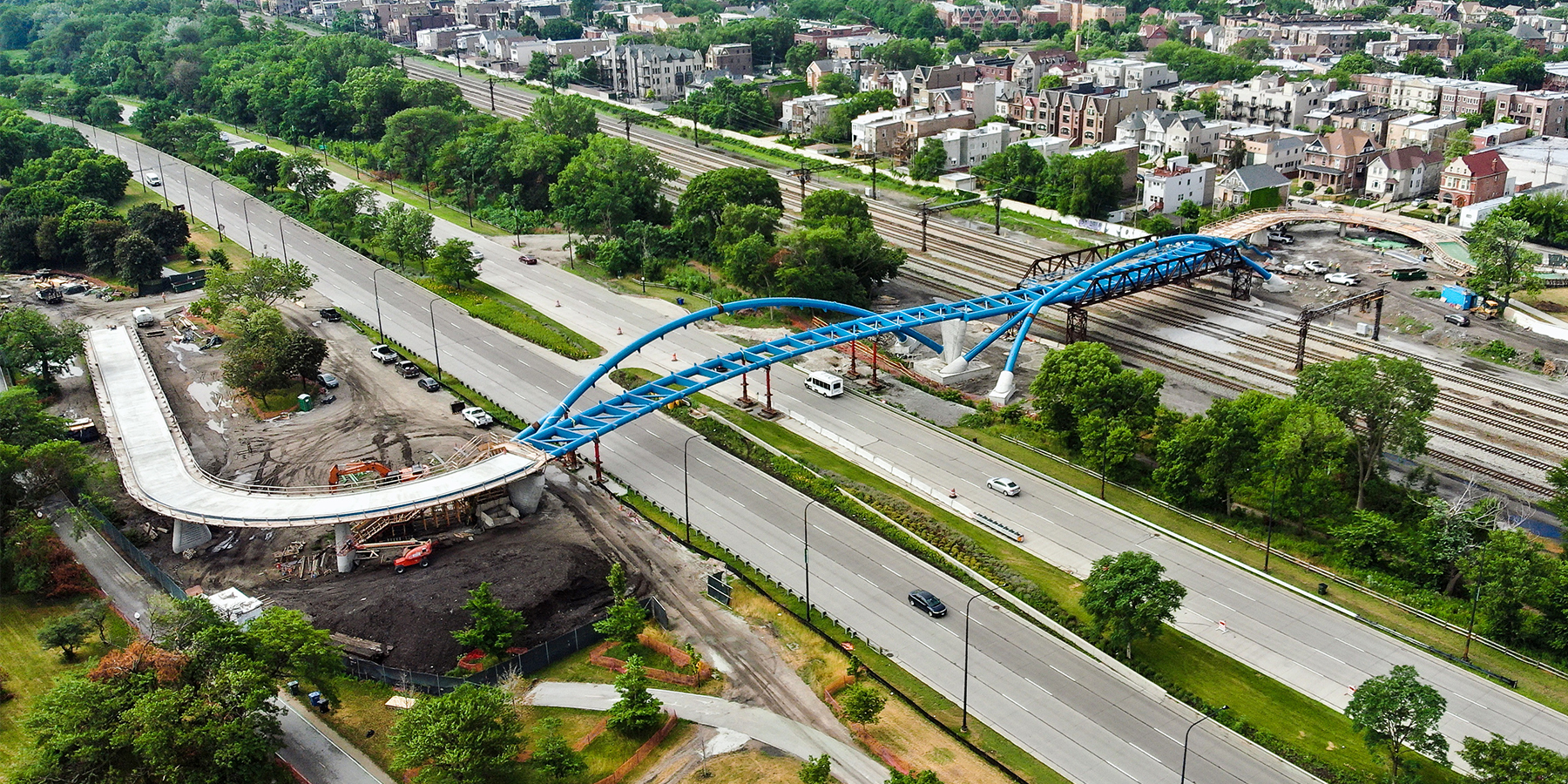
Pedestrian Bridges
Pedestrian bridge monitoring with vibration sensors and occupancy tracking nationwide.
- Vibration Monitoring Services
- Displacement Monitoring
- Inclinometer and Tilt Monitoring
Request a sector consultation
Align your thresholds, instrumentation, and reporting with our PE-led team. We respond within one business day with tailored deployment options.
Pedestrian bridges serve communities nationwide, providing safe passage over roads, rivers, and railways while facing unique structural challenges from foot traffic loads, wind-induced vibration, and environmental exposure. These structures experience dynamic loading patterns different from vehicular bridges, with crowd loading during events, running impacts, and synchronized pedestrian movement creating resonance risks. Foundation settlement, thermal expansion, and deterioration from weather exposure can compromise safety and serviceability.
Our monitoring services address the specific concerns of pedestrian bridge owners, from universities and municipalities to parks departments. We deploy sensors that detect early signs of excessive vibration, settlement, or connection fatigue before they affect user comfort or safety. This proactive approach supports compliance with accessibility standards and local building codes while enabling data-driven decisions about maintenance and rehabilitation.
Nationwide deployment ensures consistent monitoring standards across diverse environments, from urban pedestrian bridges near transportation corridors to scenic spans in parks and recreational areas. We work with structural engineers to establish alert thresholds that trigger immediate responses to potential structural concerns, ensuring continuous safe operation for pedestrians and cyclists.
Popular Services in This Sector
Vibration Monitoring Services
Pedestrian bridges experience unique vibration from foot traffic, running, and crowd loading. Vibration monitoring detects excessive movement that affects user comfort and structural integrity. Synchronized pedestrian movement can create resonance requiring structural assessment.
Displacement Monitoring
Foundation settlement and thermal expansion affect pedestrian bridge alignment and deck connections. Displacement sensors track movement patterns to identify areas needing structural reinforcement or connection repairs before serviceability issues occur.
Inclinometer and Tilt Monitoring
Pedestrian bridges can develop tilt issues from differential settlement or wind loading. Inclinometers detect movement that affects deck alignment and user safety, providing early warning of structural concerns requiring attention.
Strain Monitoring
Structural connections and deck elements experience stress from dynamic pedestrian loads and environmental conditions. Strain monitoring identifies fatigue points that could lead to connection failures or deck cracking requiring maintenance.
Long Term Monitoring and Alerts
Pedestrian bridges require continuous oversight spanning years to track deterioration trends. Long-term monitoring programs provide trend analysis and automated alerts for gradual changes that could compromise safety or accessibility.
Post Event Rapid Assessment
Pedestrian bridges may be damaged by vehicles, floods, or extreme weather. Rapid assessment provides immediate structural evaluation for safe reopening decisions, critical for maintaining community access.
Frequently Asked Questions
What structural challenges do pedestrian bridges face nationwide?
Pedestrian bridges experience dynamic loading from foot traffic, vibration from running and crowd movement, and environmental exposure. We provide monitoring solutions that address these unique concerns across urban, suburban, and recreational settings nationwide.
How does crowd loading affect pedestrian bridge monitoring?
Synchronized pedestrian movement can create resonance that amplifies vibration. Our monitoring detects excessive movement during events and helps establish capacity limits to protect structural integrity nationwide.
What accessibility concerns require structural monitoring?
Settlement and movement can affect bridge deck alignment and accessibility compliance. Our monitoring ensures pedestrian bridges meet ADA requirements and maintain safe access for all users nationwide.
How do you monitor bridges in high-traffic pedestrian areas?
We use wireless sensors and remote monitoring to minimize disruption. Our systems nationwide operate continuously while pedestrians use bridges, providing real-time data without affecting daily operations.
Example of Our Capabilities
Sector Type
Pedestrian Bridges
Situation
A university campus pedestrian bridge shows excessive vibration during rush periods
Our Approach
Install vibration sensors on deck and support structures, displacement monitoring on foundations, and establish threshold alerts for crowd loading events
Expected Outcome
Real-time vibration dashboard, capacity analysis, and maintenance recommendations for ensuring safe operation during peak usage
